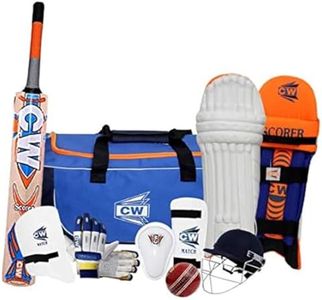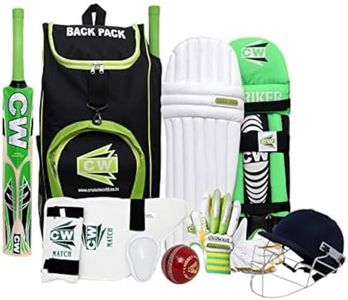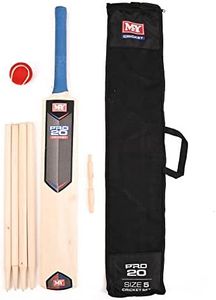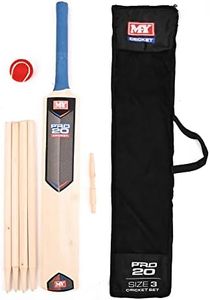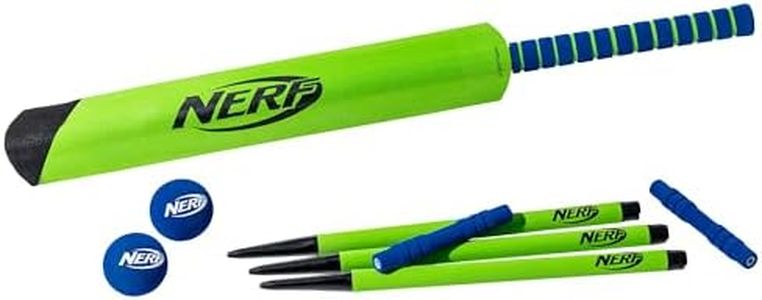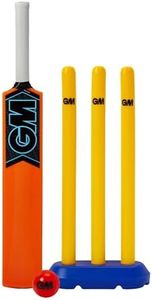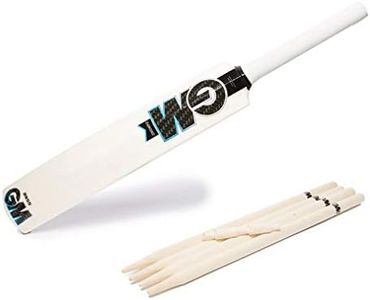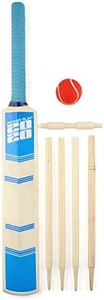We Use CookiesWe use cookies to enhance the security, performance,
functionality and for analytical and promotional activities. By continuing to browse this site you
are agreeing to our privacy policy
10 Best Cricket Kit For Kids
From leading brands and best sellers available on the web.Buying Guide for the Best Cricket Kit For Kids
Picking a cricket kit for kids can be both exciting and a little overwhelming with the many options available. The most important thing is to ensure safety, comfort, and suitability for your child’s age and skill level. Rather than going for the fanciest equipment, focus on how well each part fits and serves the needs of a young and growing player. Involving your child in the selection can also help them feel confident and comfortable with their gear.Bat Size and WeightThe bat is the centerpiece of a cricket kit, and its size and weight can greatly affect your child's performance and enjoyment. Choosing the right size means the bat will be easy for them to handle and swing, reducing the risk of injury and making the game more fun. Cricket bats for kids come in different sizes, usually numbered from size 0 (smallest) to size 6 or Harrow (for older kids), while the weight should feel manageable in one hand without straining the wrist. If the bat is too long or heavy, it can make playing difficult and might cause bad habits. Always have your child hold the bat before buying; it should allow them to control their shots comfortably.
Protective Gear Fit (Pads, Gloves, Helmet)Protective gear like pads, gloves, and helmets are crucial for keeping kids safe on the field. The purpose is to protect against common injuries from balls or accidental impacts. These items come in various sizes designed for different age groups. Pads and gloves should fit snugly but not too tight, with straps adjusted for comfort. Helmets should cover the forehead and sit firmly without wobbling. It's important to try on each piece or check sizing charts; ill-fitting gear can be distracting or less effective in protecting your child.
Material QualityThe materials used in cricket gear affect both comfort and durability. Commonly, bats are made from willow (English or Kashmir), while pads and gloves usually involve cotton, foam, and synthetic or leather exteriors. Willow bats offer good performance, but for beginners, lightweight Kashmir willow or composite materials are often suitable and affordable. For safety gear, look for solid padding and breathable, moisture-wicking liners to prevent discomfort during play. Always check for sturdy stitching and durable straps for longevity.
Ball TypeThe choice of ball depends on your child's age and skill level. Real leather balls are used in advanced levels, but for most kids, especially beginners, soft or tennis-style cricket balls are safer and easier to play with. They reduce fear of injury and help children improve their technique before moving to harder balls. Consider starting with a soft ball and gradually progressing as your child becomes more skilled and confident.
Bag Type and PortabilityA cricket kit bag helps kids keep their gear organized and makes it easier to transport everything to practices or games. Bags vary in size and design; look for one with ample compartments for each item and comfortable shoulder straps. Lightweight, compact bags are ideal for younger children, ensuring they can carry their own things without help. If your child travels frequently for cricket, sturdier wheels or handles might be helpful.
